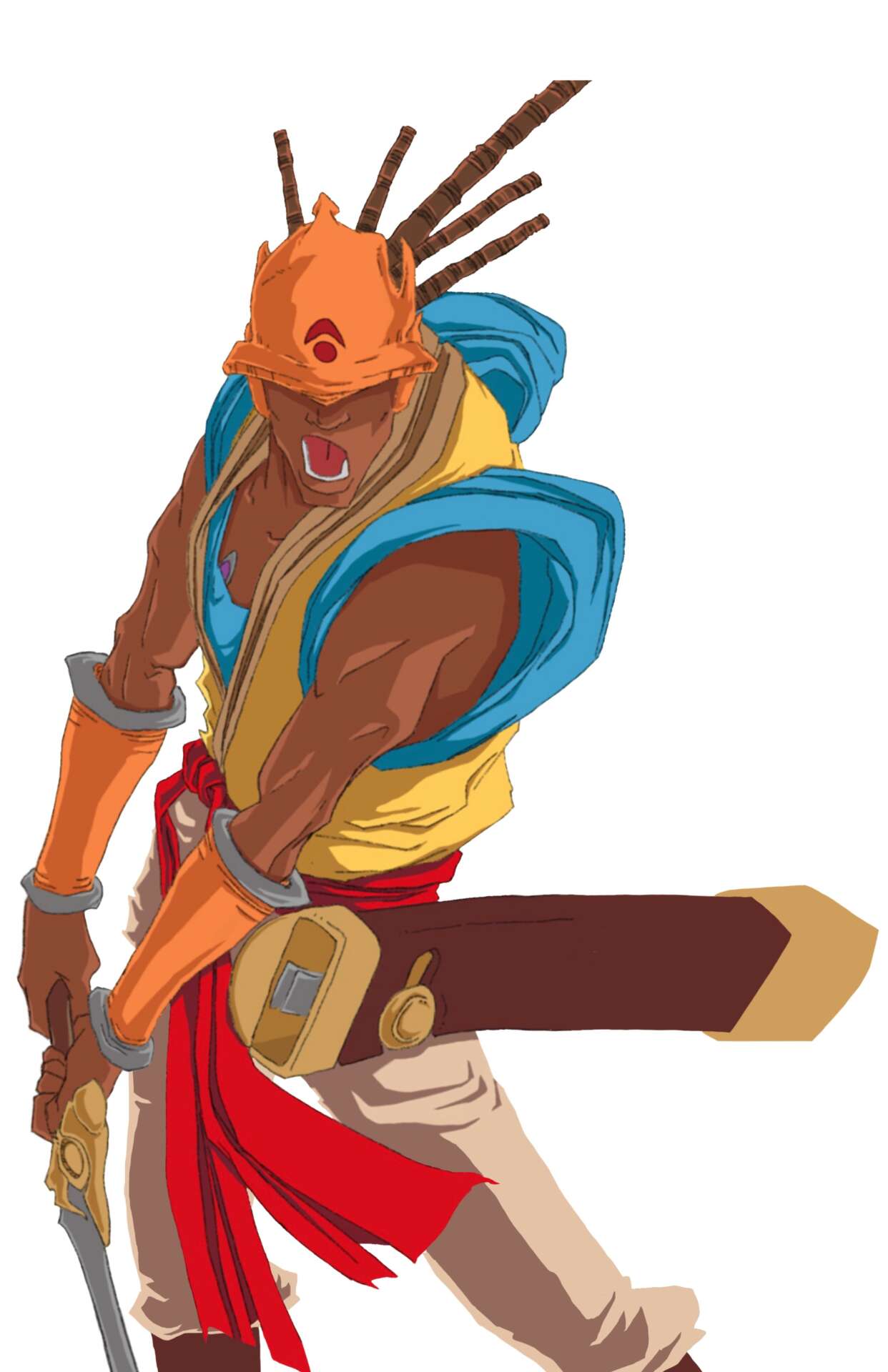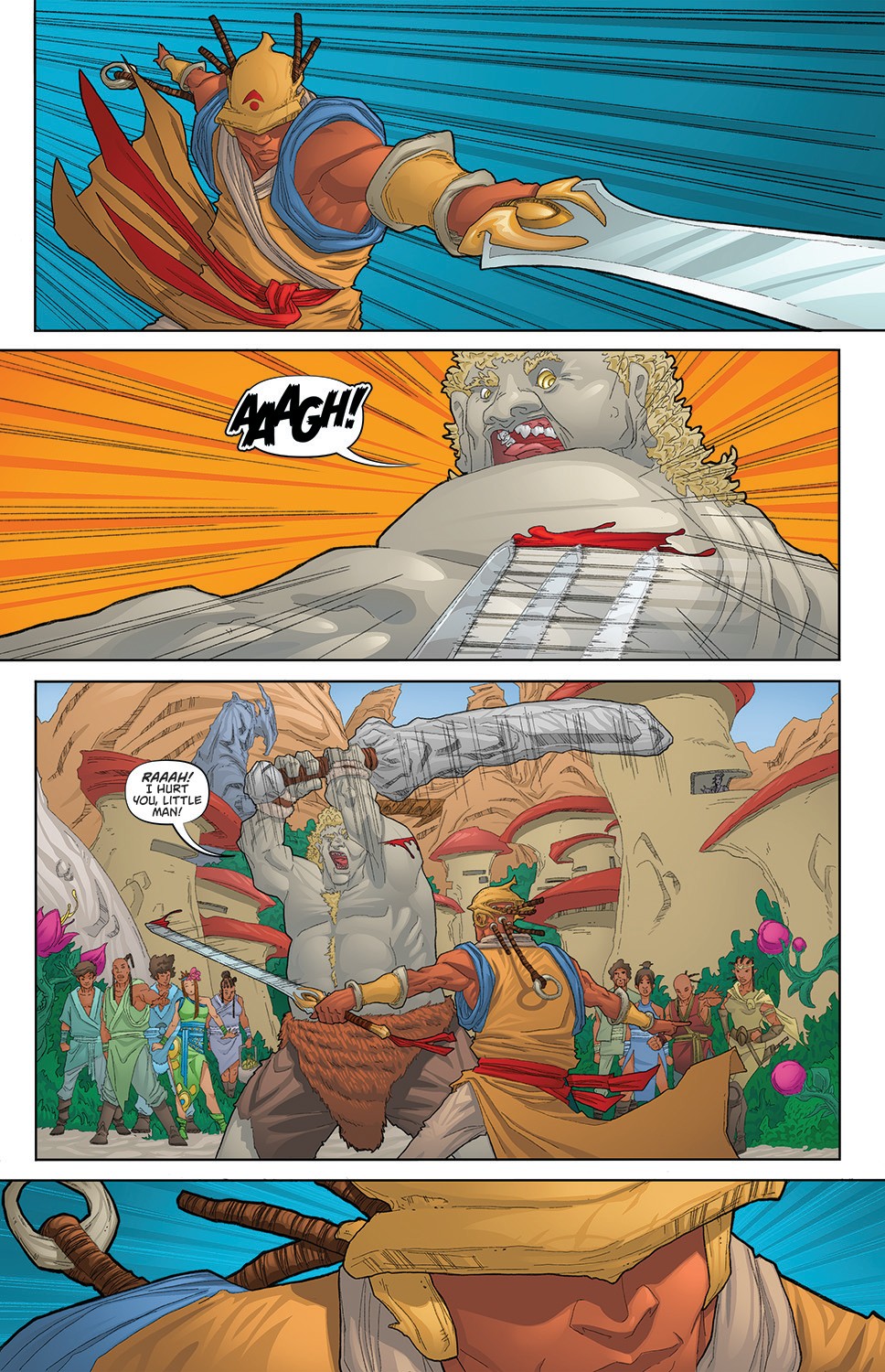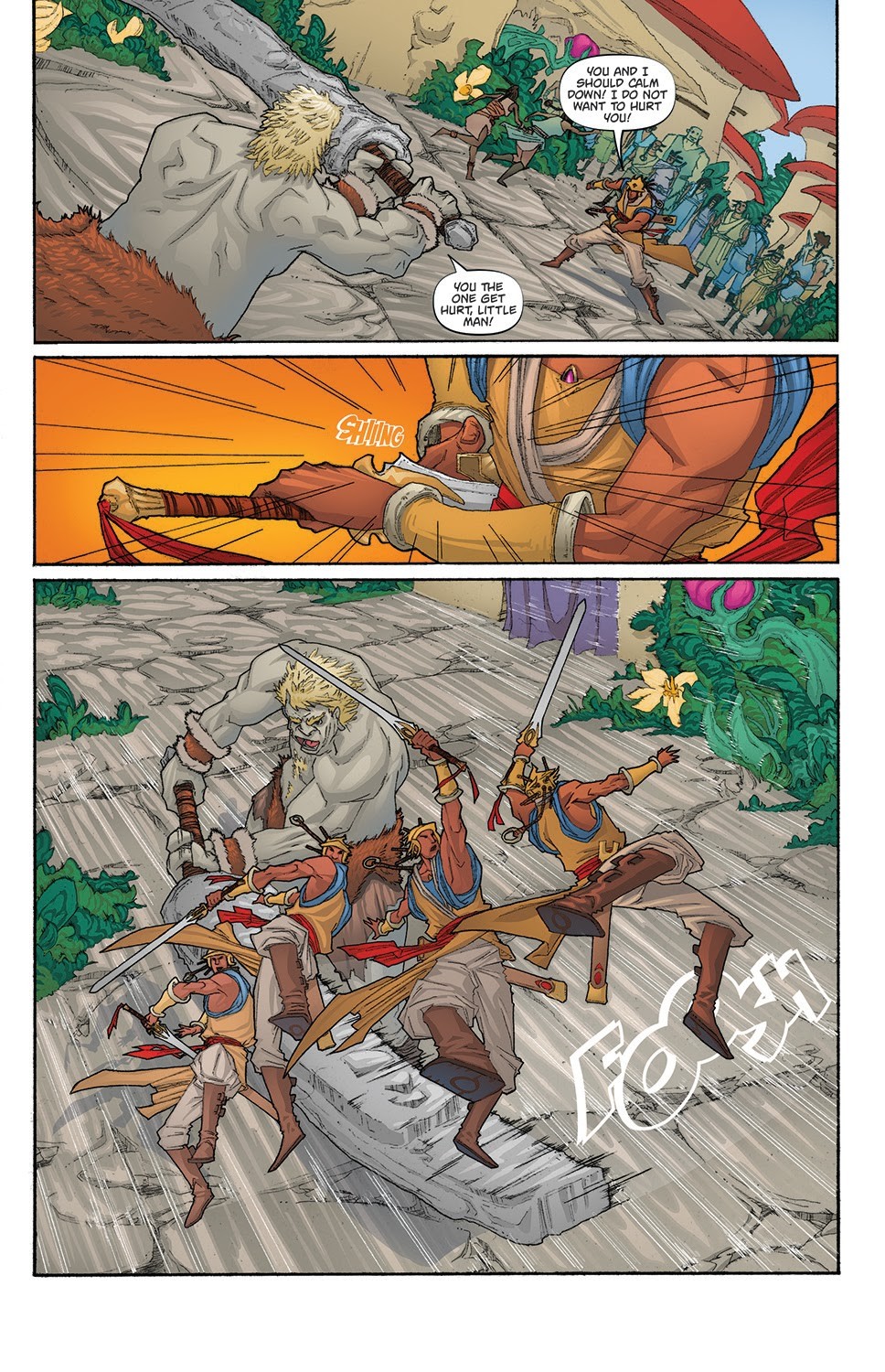We caught up with the brilliant and insightful Rodney Anderson Jr. a few weeks ago and have shared our conversation below.
Rodney , looking forward to hearing all of your stories today. We’d love to hear about a project that you’ve worked on that’s meant a lot to you.
By far my most meaningful project has been working on my fantasy adventure comic book TRINITY BLADE! It’s definitely a passion project born out of my love of ALL fantasy. From the epic works of J.R.R. Tolkien, to the sourcebooks of Dungeons and Dragons and the exciting action adventures of cartoons like ThunderCats and He-Man, I dug it all! But as fun as these stories were to watch or read, there was always something that bothered me about them. If the characters were human, none of the main looked like me. Or if they did they were never the lead character, the character that the story centered around. Even worse, some fantasy would make all the dark skin characters the villains and all of the lighter skinned characters the heroes. Being a Black kid who was also a super fantasy nerd growing up made it hard to find characters in that genre to identify with. But it wasn’t until I became more proficient in my drawing at art college that it really started to bother me. Why weren’t creative teams making fantasy content with at least some Black or dark skinned characters? And if they did include Black characters why did those characters have to be sidekicks or villains or the absolute worse one, slaves? Once I knew I wanted to draw comics for a living back in college I immediately started the initial work on my own fantasy story. If no one was going to write and draw the type of fantasy story I wanted to see, then I would just have to write and draw it myself. A story with tons of action and adventure but most importantly for me; a story that had a main character that looked like me in a true high fantasy. That’s why TRINITY BLADE really is a passion project for me. Hopefully comic readers, adventurers and fantasy lovers alike will feel that passion with every line I draw in this story!



Rodney , before we move on to more of these sorts of questions, can you take some time to bring our readers up to speed on you and what you do?
My beginnings in the art world started with learning my craft in art school. I attended Savannah College of Art & Design and studied in the Sequential Art program for comics. It’s always funny when conversations come up about what’s your degree in and I have to tell people I have a bachelors in comic books but I’ve come to accept the look I might get when I say it. That time in art school helped to hone my skill set and I’m grateful for it. Afterwards I moved to San Diego in 2010 to be in and around San Diego Comic Con and comic-adjacent art scene there. I freelanced for a while but like many artists, paying the bills with art alone in an expensive city isn’t easy so I took a job running an art store on San Diego State University’s campus. At the time I didn’t think this was ideal because it wasn’t drawing for work but in hindsight it was very important because it taught me the importance of a business mindset. So often artists dampen their own success because we focus only on the creative part of our work but not how to market it which often times kills our forward momentum and the stress of this can lead to burnout. Running an art store at a university also gave me connections to teachers and students interested in learning comic book art. With a bit of business know how, some connections and my artistic skill set I decided to leave the corporate 9 to 5 all together in and become a full time working artist and comic book art teacher. I freelanced commission work, illustrated fan art and taught comic book art classes in around San Diego at schools including Kalabash School of Music and the Arts and A Reason To Survive (A.R.T.S.).
Through a lot of hard work I was able to create a body of work substantial enough to use to apply for professional status with San Diego Comic Con which I was given. This was a huge accomplishment for me as being considered a professional by the biggest and most influential comic con was one of my top artistic goals. Soon I felt confident enough to exhibit my work at comic conventions across the country including SDCC, Comicpalooza in Texas, Phoenix Fan Fusion in Arizona and many others. This is when I knew I had the chops to go back to my fantasy story TRINITY BLADE and finally complete issue #1. I launched a successful Kickstarter for it got it out to my backers and the rest is history. I’m so proud of that work I did, both writing the story and drawing every single bit of line art, and the team of talented artists that help me finish it up including Tristan Whitehouse (interior colors and layout), Adam Harris (cover colors), Shawn Lee (lettering) and Travis Rivas (editor aka “get it done already” lol).
Now I’m traveling to comic conventions selling my artwork and teaching full time. And of course working on issue #2 of TRINITY BLADE with a Kickstarter campaign coming soon! You can keep up with me at my website rodneyandersonjr.com or over on Instagram @rodneyandersonjr.
In your view, what can society to do to best support artists, creatives and a thriving creative ecosystem?
When it comes to society supporting artists, people should first think about a world without art. How boring and lifeless everything would be. If you had choice between two coffee shops or restaurants and one had no artwork on the walls or no interior designing to make the atmosphere pleasant which one would most people chose? Then once everyone understands that art makes our world beautiful and enjoyable to live in the next thing people should ask is how much is that worth. Do you have the skill to beautify your environment with art? If not then you have to have an artist do that work for you and that is worth paying for. When you go to a store for a product, it isn’t yours until you pay for it. This concept is a simple one in our mostly capitalist society but for some reason we still have trouble applying it to artist. Creating art requires time and effort like any other type of work. Yes artist most often enjoy this work more but that should have no bearing on whether or not it is worthy of compensation. And I would argue that we as artists put much more of ourselves into this work and make far more sacrifices to bring beauty into the world and that our work should be considered equal in importance to things such science, and engineering because we provide concepts, products and services that enrich our lives as a whole.



For you, what’s the most rewarding aspect of being a creative?
The most rewarding aspect of creating art is taking a raw idea from an abstract vision to a completed finished product or piece. There’s a rush of energy that happens when an artist embarks on that journey that’s so hard to explain one who aren’t artists. That initial spark of an idea is so powerful that it propels you forward to work and rework that idea until it’s something tangible. Then there’s the active creation stage where expectations meet frustrations head on. Working through these frustrations and overcoming them is exhilarating! Then once that project is done and you lay the pencil down and just stare at this work that took days, months or years to finish….man, there’s no other feeling like it. The feeling of pure accomplishment against all odds. We artist chase this feeling throughout our entire careers and it defines our being in this world. It’s definitely why I do what I do.
Contact Info:
- Website: rodneyandersonjr.com
- Instagram: rodneyandersonjr
- Facebook: The Art of Rodney Anderson Jr


